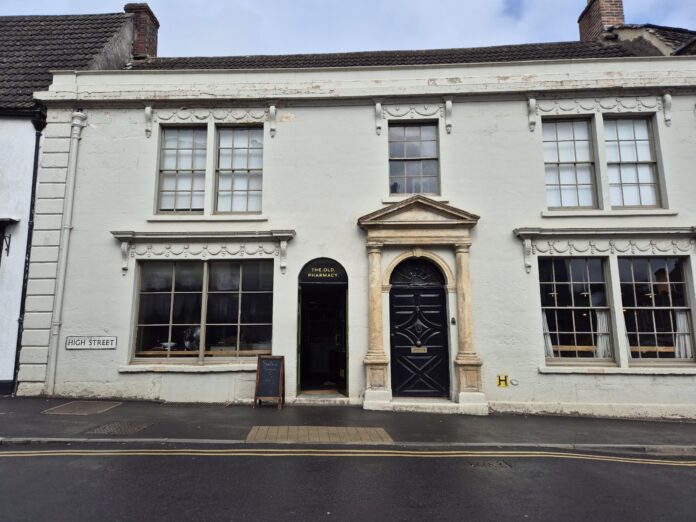Ideal for those looking to relocate to the Big Smoke when it’s safe to do so..
London is home to one of the most multicultural populations in the world, and presents opportunities for personal and professional progression rarely found in the world’s other truly ‘global’ cities. Indeed, UCL reports that “Approximately 1/3 of Londoners were born abroad and over 200 languages are spoken in the capital”, and as such, if you’re looking to move to London from abroad, you’re bound to find a warm welcome somewhere in the capital.
That said, there are a few essentials that are handy to know to make your settling into the city as smooth and seamless as possible. With that in mind, if you’re looking to relocate from abroad, here are 5 handy tips for expats moving to London, IDEAL for those looking to relocate to the Big Smoke when it’s safe to do so.
GET TO GRIPS WITH YOUR PAPERWORK
First things first, getting your visa sorted should, of course, be your number one priority. It’s all well and good familiarising yourself with the closest supermarkets or the borough with the best pubs, but if you’re not allowed to legally live in the country, you’re wasting your time.
Get someone else to do all the paperwork so you can concentrate on those more important things we just mentioned. Immigration lawyers can take care of the sometimes obstructive bureaucracy. They can also answer all your questions on requirements, eligibility stipulations, work permits and more.
Be sure to have all your documents to hand, too. If you’re renting a flat or finding a job, you’ll need a whole host of letters – proof of address, bank accounts, evidence of your right to remain – so make sure you have everything translated into English and certified. Endeavour to carry both paper and digital copies of all your documents to make the whole process of settling as smoothly as possible.

FINDING SOMEWHERE TO LIVE
Though it can offer a decent level of peace of mind, choosing your accommodation (both the neighbourhood and actual premises you’ll be living in) prior to arriving in your new city is, frankly, an error.
Instead, it’s best to give a few neighbourhoods a ‘trial run’, as it were, to find which best suits your unique needs. Check out our guide to East London’s best areas here and some of the coolest neighbourhoods in the city here for a little more inspiration.
Once you’ve familiarised yourself with your favourite terrain in the city, then it’s time to find a roof. Finding a flat in London is no mean feat. Beware of shady landlords in London, and rent from a reputable agency rather than finding something on Gumtree from a private landlord. Your rights will be better protected should things go wrong.
Make a list of the best London property sites and sign up to updates. Trustworthy platforms include SpareRoom, RightMove, Zoopla and OpenRent. If you’re looking to live in a specific area, take a trip there and pop into a local estate agents in their bricks and mortar offices. They can show you properties that meet your requirements.
The most important tip when looking for somewhere to live in London is that places go fast. As such, you have to be available and in the city when the call comes. Anywhere of any real appeal tends to go – or goes up in price – on the same day it becomes available, with pesky estate agents exacerbating the problem by exaggerating (and often simply manufacturing) the need for urgency.
To circumvent this issue, consider closing off a dedicated week in your calendar to flat hunting in which you rent an Airbnb or stay with a friend in London and get deep into the search without distraction.
Ideal tip: Parking in London is notoriously expensive and it’s often difficult to secure a spot at all. If you’re bringing your car from abroad, it’s sensible to secure accommodation that has either off-street parking, a drive, or guarantees parking permits, at the very least.
Whether you’re planning to relocate or sell a car overseas, look for an international car shipping provider near you. The four major players here are arguably Montway Auto Transport, Easy Auto Ship, Sherpa Auto Transport, AmeriFreight.
TUBE TRAVEL ESSENTIALS
London wouldn’t be able to function without the tube. It’s the quickest and most useful method of transport in the capital. Yet, it’s also the most infuriating. Most meetings in the city begin with a complaint about the tube and the nightmare journey that just befell the traveller.
Whether you’re London born’n’bred, a reluctant resident or the occasional visitor, there’s one piece of knowledge which we all share; that mastering the transport system grants you a key to the city. Not exhaustive by any means, but here are some of our favourite apps which help you get around:
- Citymapper – Live updates on the quickest public transport routes and tube times.
- Busmapper – Live updates on bus timetables and delays.
- Tube Map – Transport for London’s official route planning app.
- Uber – Do we need to explain?
- TFL Oyster & Contactless – Keep track of everything Oyster Card related on your phone; super useful when you’re in a rush. Which you always will be.

EATING OUT & IN
One of the greatest joys of living in London is that you can find food from anywhere in the world. Eating out in this city is one of the biggest perks of living here, and the diversity of deliciousness on offer makes the rat race seem almost worth it sometimes.
From Michelin Star restaurants to some of the best markets in the world, when it comes to food, the world is here. Want a traditional Turkish breakfast? No problem. Fancy some West African cuisine? Sure. Keen to sample the food of Bhutan? It’s here.
While you can find a hugely diverse range of cuisines in the capital, if you’re looking to sample some proper ‘British’ gastronomy, some of the best British restaurants in the capital include Battersea Pie Station, St. John, The Harwood Arms and Poppies Fish’n’Chips. Do give the national cuisine a try, and don’t believe the scurrilous stereotypes about stodge!
That said, eating in London can get expensive. Some handy insider tips for eating out for less in the capital, then…
- Look for BYOB restaurants.
- Keep up to date with Eater London, who really know their stuff and are good people, too.
- Take advantage of the special pre-theatre menus offered by some restaurants in the West End.
- Keep your eye out for soft launches where restaurants test their menu and operations before opening. They often offer up to 50% off food. Soft launches are listed on hot-dinners.com and softlaunchlondon.com.
- Zone out, and head for the outskirts of London for some seriously good cheap eats.
- Check out this extensive, beautifully crafted map of the Best Value Restaurants in London. It’s amazing.
SUPERMARKET & MARKET KNOW HOW
When it comes to eating in, it’s a good idea to get to grips with the different supermarket options out there.
The cheapest national supermarkets on the high street are Lidl, Aldi, Asda and the frozen food queen Iceland. Mid-market options include Tesco, Sainsbury’s and Morrisons. At the more expensive end of the market, you’ll find Waitrose, M&S Whole Foods and Ocado (online only).
Zero Waste, plastic free bulk stores are also becoming popular throughout the capital with shoppers looking to minimise their environmental impact. However, while friendly on the environment, these low-impact stores aren’t so friendly on your wallet.
London is also home to corner shops aplenty, and these independent stores are a cornerstone of London life. Dotted around London’s many neighbourhoods, they offer basic foodstuffs and the odd bottle, too.
If you’re on the hunt for esoteric ingredients and some real bargains, too, then the capital is also home to a diverse range of global supermarkets from Thai to Chinese, Mexican and beyond, all of which stock a variety of products you’re not likely to find in most mainstream supermarkets. If you’re looking for a specific ingredient from a certain country, you’re likely find it in London – just Google.
London is also famous for its many markets – from Brixton to Dalston, you’ll find them everywhere, and are particularly great for a variety of cheap, fresh fruit, vegetables, fish and meat. Saturdays in the cities see farmer’s markets popping up, too. And if you’re still hungry after all of that, well, you’re not looking hard enough.
LONDON IS ALWAYS EXPENSIVE BUT AT TIMES FREE
London is one of the most expensive cities in the world to live in. Indeed, it’s estimated that a single person’s monthly costs (excluding rent) are around approximately £845.31.
Luckily, London has much to offer, and a lot of it is, remarkably, free. Museums, art galleries and many other educational attractions won’t cost you a penny to enter – amazing and largely unique for a capital city. There’s also beautiful, wildlife abundant parks for a stroll, historic streets to take in and exciting street art and performances to enjoy. Make the most of this side of London if you’re keen to save money whilst settling in!
Check out our guide on 7 IDEAL travel tips for getting around London and 5 tube survival tips only a Londoner knows for more!
*Right now (February 2021) there are a whole host of restrictions on travel, both into the UK from abroad and within its cities, including London. Do check the very latest Government rules and guidance on international travel before making your move*





